Physical activity doesn’t need to be complicated. Something as simple as a daily brisk walk can help you live a healthier life.
For example, regular brisk walking can help you:
- Maintain a healthy weight and lose body fat
- Prevent or manage various conditions, including heart disease, stroke, high blood pressure, cancer and type 2 diabetes
- Improve cardiovascular fitness
- Strengthen your bones and muscles
- Improve muscle endurance
- Increase energy levels
- Improve your mood, cognition, memory and sleep
- Improve your balance and coordination
- Strengthen immune system
- Reduce stress and tension
The faster, farther and more frequently you walk, the greater the benefits. For example, you may start out as an average walker, and then work your way up to walking faster and walking a mile in a shorter amount of time than an average walker, similar to power walkers. This can be a great way to get aerobic activity, improve your heart health and increase your endurance while burning calories.
You can also alternate periods of brisk walking with leisurely walking. This type of interval training has many benefits, such as improving cardiovascular fitness and burning more calories than regular walking. And interval training can be done in less time than regular walking
Best exercises for lowering cholesterol
Some research has indicated that regular exercise may be important for increasing plasma levels of HDL cholesterol. That means it’s worth it to incorporate more activity into your day however you can — no matter what form.

You can try to incorporate exercise in any way. Here are a few examples:
take a walk during your lunch hour
choose the stairs
stand up to take phone calls
store a jump rope at your desk
In addition, try to incorporate at least 30 minutes of structured exercise into each day. It’s suggested this is enough time to increase HDL levels in people with diabetes.
Any exercise is better than none, according to some research Trusted Source, and studies have shown that the following six types are effective at reducing high LDL cholesterol levels.
Go for a nice run or jog
According to the American Heart Association (AHA), 150 minutes Trusted Source of moderate intensity aerobic exercise per week can help lower cholesterol and reduce high blood pressure.
Exercise can also help raise Trusted Source HDL cholesterol.
Take a brisk walk
There’s no need to hit the treadmill or elliptical at full speed. In fact, if you’re not used to running, are overweight or have issues with your joints, it could do more harm to your body than good.
Start with an easy walk around the block, then a longer walk, then a slow jog. Not only will you be lowering your cholesterol, but you’ll be lowering your blood pressure, too.
Bike to work or just for fun

Health
Biking is a low-impact exercise that can improve your heart and lung health, reduce your risk of cardiovascular disease, and help you lose weight.
Environment
Biking can reduce your household emissions by at least 6%, and you’ll be exposed to two to three times less air pollution than drivers.
Fun
Biking can be a fun way to get to work, and it’s an easy way to fit exercise into your day.
Take a few laps at the pool

If walking, running and biking are proving to be too much on your body, swimming can solve your cholesterol problems just as effectively.
When you take a few laps in the pool, you’re working your entire body, and you’re doing so in a way that can feel therapeutic. Swimming is great for overall heart health and part of that is lowering your cholesterol. lowering your cholesterol.
Lift a few weights

Improves cholesterol levels
Resistance training can help lower LDL cholesterol and raise HDL cholesterol.
Increases metabolism
Strength training can help improve body composition and increase metabolism.
Burns calories
Improved muscle strength from resistance training helps burn more calories while working out and resting.
Strike a few yoga poses

Sarvangasana:
One of the most beneficial yoga poses or asanas for lowering high cholesterol is Sarvangasana. How to do: Bring the legs up to the back, then centre your weight on your head, shoulders, and elbows.
Paschimottanasana:
This pose can also be highly effective at lowering blood cholesterol levels.
Frequently Asked Questions About Cholesterol
1) What Is Cholesterol?
Cholesterol is a waxy, fat-like substance that occurs naturally in the body and is made by the liver. Cholesterol is also present in foods we eat. People need cholesterol for the body to function normally. Cholesterol is present in membranes (walls) of every cell in the body, including the brain, nerves, muscles, skin, liver, intestines, and heart.
2) Why Should I Be Concerned About Cholesterol?
Too much cholesterol in your body means that you have an increased risk of getting cardiovascular diseases such as heart disease. If you have too much cholesterol in your body, the cholesterol can build up inside the walls of the arteries that carry blood to your heart. This buildup, which occurs over time, causes less blood and oxygen to get to your heart. This can cause chest pain and heart attacks. Too much cholesterol can also increase your risk of stroke.
3) What’s the Difference Between “Good” and “Bad” Cholesterol?
HDL (high density lipoprotein) cholesterol is known as “good” cholesterol. HDL takes the “bad,” LDL (low density lipoprotein) cholesterol out of your blood and keeps it from building up in your arteries. LDL cholesterol is known as bad cholesterol because it leads to the development and build up of plaque on the walls of your arteries. That increase your chances of getting cardiovascular disease. When being tested for cholesterol, make sure you get numbers of total cholesterol, HDL cholesterol and LDL cholesterol.
4) How Much Cholesterol Is Too Much?
Doctors recommend your total cholesterol stay below 200 mg/dL. Here is the breakdown:
Total Cholesterol Category
Less than 200 Desirable
200 – 239 Borderline high
240 and above High
An LDL (bad cholesterol) level of 190 or above is considered a serious risk factor for heart attack, stroke, and other problems caused by clogged arteries. In the past guidelines focused on lowering LDL levels to specific “target” numbers that were considered safer. Lowering cholesterol, though, is just one part of an overall strategy for reducing your risk for heart disease.
HDL (good) cholesterol protects against heart disease, so for HDL, a higher number is better. A level less than 40 is low and is considered a risk factor because it increases your risk for developing heart disease. HDL levels of 60 or more help to lower your risk for heart disease.


